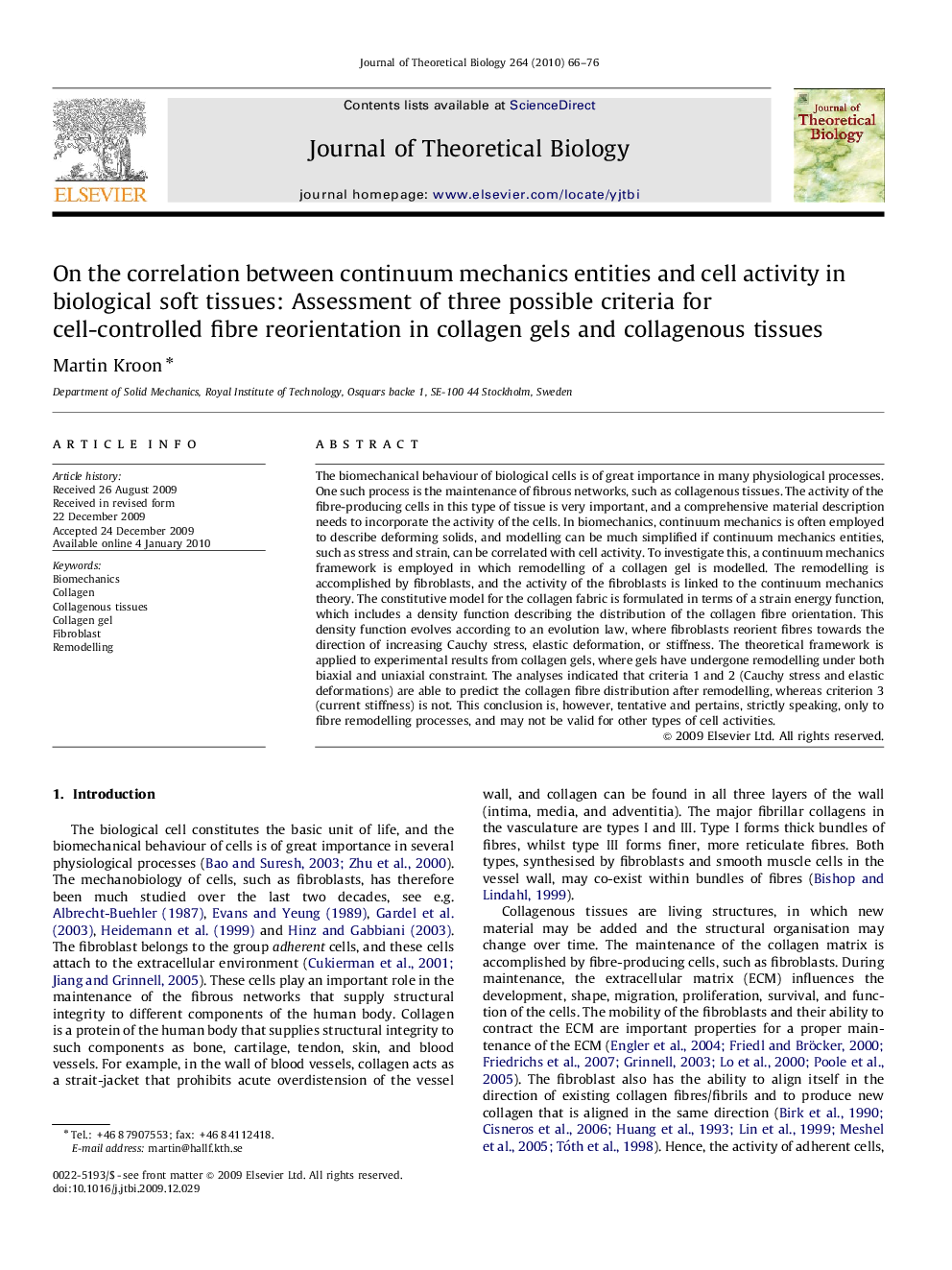| Article ID | Journal | Published Year | Pages | File Type |
|---|---|---|---|---|
| 4497332 | Journal of Theoretical Biology | 2010 | 11 Pages |
The biomechanical behaviour of biological cells is of great importance in many physiological processes. One such process is the maintenance of fibrous networks, such as collagenous tissues. The activity of the fibre-producing cells in this type of tissue is very important, and a comprehensive material description needs to incorporate the activity of the cells. In biomechanics, continuum mechanics is often employed to describe deforming solids, and modelling can be much simplified if continuum mechanics entities, such as stress and strain, can be correlated with cell activity. To investigate this, a continuum mechanics framework is employed in which remodelling of a collagen gel is modelled. The remodelling is accomplished by fibroblasts, and the activity of the fibroblasts is linked to the continuum mechanics theory. The constitutive model for the collagen fabric is formulated in terms of a strain energy function, which includes a density function describing the distribution of the collagen fibre orientation. This density function evolves according to an evolution law, where fibroblasts reorient fibres towards the direction of increasing Cauchy stress, elastic deformation, or stiffness. The theoretical framework is applied to experimental results from collagen gels, where gels have undergone remodelling under both biaxial and uniaxial constraint. The analyses indicated that criteria 1 and 2 (Cauchy stress and elastic deformations) are able to predict the collagen fibre distribution after remodelling, whereas criterion 3 (current stiffness) is not. This conclusion is, however, tentative and pertains, strictly speaking, only to fibre remodelling processes, and may not be valid for other types of cell activities.
